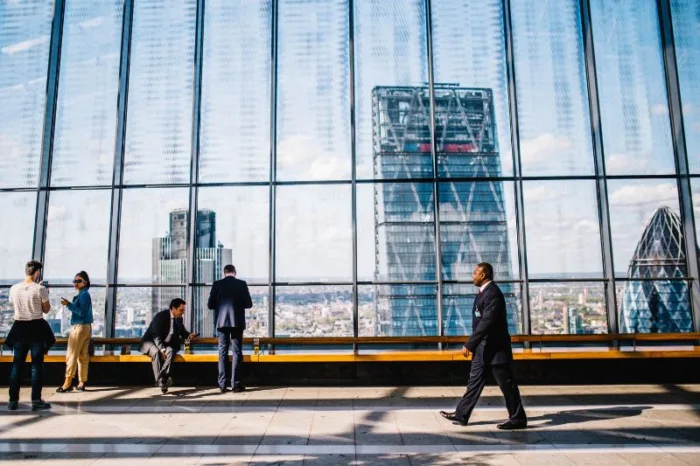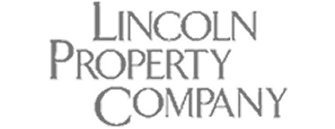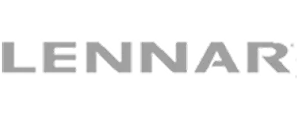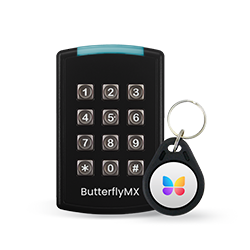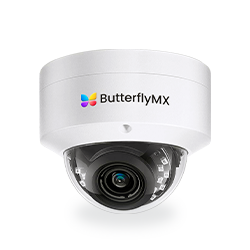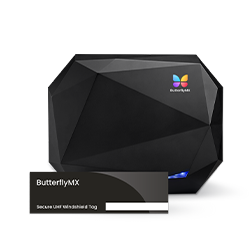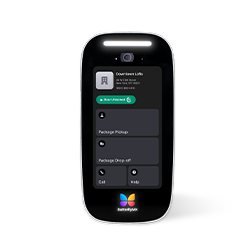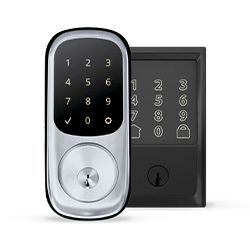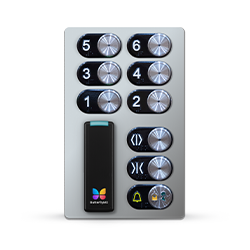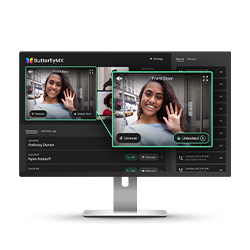Key takeaways
- A corporate security system is a framework that integrates access control, surveillance, and visitor management to protect assets at a commercial building.
- Access control systems enhance security and efficiency by using mobile credentials and cloud-based management.
- When looking for a corporate security system, you should consider access needs, integration capabilities, and scalability options.
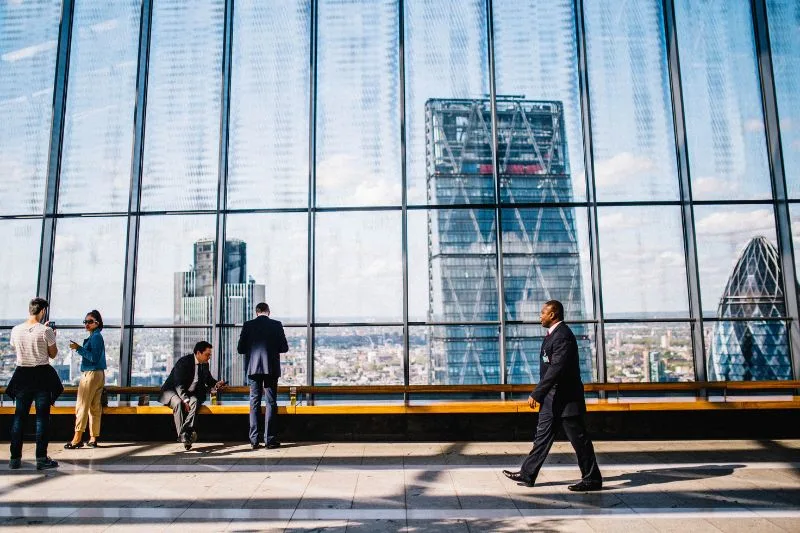
Ensuring the security of a corporate building isn’t just about installing cameras and hiring a security guard. It requires you to implement a comprehensive business security system that protects assets, employees, and tenants while improving operational efficiency. As a corporate property manager or owner, your role involves balancing security, convenience, and cost-effectiveness to create a safe and well-managed property.
This guide walks you through everything you need to know about corporate security systems, helping you make informed decisions tailored to your building’s needs.
In this post:
More than 40K, 5-star reviews!
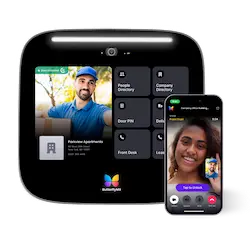
Video Intercoms
Open doors, gates & garages from anywhere.

QR Code Intercom
Smartphone-based visitor access.
Access Control
Fob, key cards, PINs, and mobile apps.
Security Cameras
Visibility throughout your property.
Vehicle Access
Hands-free access for gates & garages.
Package Room
Receive, store, and manage deliveries.
Smart Locks
Connect to all major brands and models.
Elevator Controls
Unlock key-fobbed elevators for anyone.
Front Desk Station
See all your doors and cameras in one place.
What is a corporate security system?
A corporate security system is a type of property technology designed to protect assets within a corporate environment. With a robust business security solution, you can effectively regulate access to different areas of the building, monitor activity in real time, and ensure rapid response to entry events.
One key component of commercial security is an access control system, which allows only authorized personnel to enter specific areas. Controlled access can range from traditional keycards and fobs to more flexible mobile credentials or biometric scanners that verify an individual’s identity through fingerprints or facial recognition.
For instance, a high-rise office building can implement mobile-based access control, allowing tenants to unlock the front door via their smartphones, reducing wait times for guests, who would otherwise wait outside while the tenant travels to the front door to grant access.
Considerations for corporate security
Creating a robust security system for a corporate building requires a different approach than residential security. Corporate offices come with their own set of concerns, including protecting classified information, catering to security clearances, and abiding by legal workplace standards.
We’ve identified the top considerations for corporate security:
- Authorized access. Ensuring that doors, gates, and entry points are properly secured within your commercial security system is critical. Implementing multi-layered access control, such as a combination of keycards, mobile credentials, and other types of authentication, can help mitigate risks and improve security enforcement.
- Employee safety. Having a centralized emergency response system, integrating panic buttons, and automating emergency alerts can help improve response times and protect building occupants. Additionally, clearly marked evacuation routes and automated lockdown protocols ensure everyone’s safety in the event of an emergency.
- System integrations. Security tools must work seamlessly with your building management security system to ensure efficiency and reliability. As such, a well-integrated system ensures that access control, surveillance, alarms, and visitor management systems work cohesively. Further, cloud-based security platforms enable remote management, allowing facility managers to monitor and control security operations from anywhere.
- Scalability. Corporate security needs evolve as businesses expand, requiring solutions that adapt to growing security demands. Whether your business is opening new office locations or adding more employees, a scalable corporate security system will support future growth. Choosing a cloud-based solution ensures that upgrades can be seamlessly expanded and reduced based on current needs.
What are the key components of a corporate security system?
- Access control systems
- Video monitoring
- Alarm systems
- Visitor management solutions
- Integrations with management systems
1. Access control systems
Access control systems regulate who can enter specific areas of a building. Traditional access control uses keycards and fobs, but modern systems now incorporate mobile app credentials, biometric scanners, and cloud-based access control.
For example, a multi-tenant office building may implement mobile-based access control, allowing employees and visitors to gain entry through an app rather than physical credentials. This simplifies access for your tenants and opens the door for hassle-free visitor management.
2. Video monitoring
High-definition video security cameras and remote monitoring provide an extra layer of security by capturing activity in real time. Security cameras can help you detect unusual activity, such as unauthorized access attempts, as soon as they happen. What’s more, in high-traffic areas like lobbies and parking garages, wide-angle cameras ensure 24/7 visibility.
3. Alarm systems
Alarm systems protect corporate properties from unauthorized entry, but they also ensure that your building is wired to react to all kinds of unexpected events. Motion sensors, glass-break detectors, and alarm triggers notify personnel when suspicious activity occurs. In large office buildings, automated lockdown protocols can immediately secure key access points in case of a breach or emergency.
4. Visitor management solutions
Managing visitor access is crucial for security and operational efficiency. Video intercoms, digital visitor check-ins, and cloud-based access logs allow you to pre-authorize guests and vendors, track entry history, and grant remote access. For example, a law firm may require pre-scheduled guest entry using touchless visitor check-in kiosks, in which case, a visitor management solution will help save time for staff members.
5. Integration with management systems
A seamless corporate security infrastructure integrates security systems with a building’s existing management systems. For example, integrating access control with a building management system will streamline safety responses and also give you a comprehensive view of the property you’re managing.
Discover five ways to automate your office now:
A modern alternative to corporate security systems
Investing in a corporate security system is one of the most effective ways to protect your building and improve operational efficiency.
That’s why we suggest ButterflyMX as a modern take on corporate access control. Our system is installed in over 15,000 buildings and has over 40,000 five-star ratings. These metrics mean that ButterflyMX currently simplifies access for many organizations with the same needs as you.
ButterflyMX features for corporate security solutions
- Video Intercom. As our flagship product, the ButterflyMX Video Intercom makes access to offices quick and simple, eliminating the need for keyfobs or doormen. It enables employees to grant themselves and guests access via our highly-rated mobile app.
- Security Cameras. Choose between our Dome and Bullet Security Cameras to capture HD video footage 24/7 that is stored in our powerful cloud-based OS. Moreover, our cameras are built to withstand a variety of weather conditions, ensuring you gain insight regardless of temperature or climate.
- Access Control System. ButterflyMX’s Access Control System can be scaled for businesses of all sizes, giving you the ability to manage access through our mobile app or online dashboard. Choose between a wide variety of supported credentials, such as our mobile app and PIN codes. Or, you can give our key cards and fobs if you prefer physical access credentials.
- Front Desk Station. Looking for lobby or main entrance monitoring services that don’t include hiring more personnel? The Front Desk Station can help intercept visitors and employees at the reception desk, where they can sign in, use the live feed to talk to staff remotely, or request access to the building.
- Elevator Controls. ButterflyMX Elevator Controls manage who can enter certain floors of your property with a key-fobbed elevator. You can easily ensure guests can only access the floors of the respective tenants who let them in, increasing safety and peace of mind.
Benefits of ButterflyMX for corporate properties
- Ease of use. With a user-friendly mobile app, ButterflyMX eliminates the need for physical credentials, reducing your workload and the security risks associated with lost or stolen keycards. You can grant remote access to guests with just a tap on your phone, enhancing both security and convenience.
- Scalability. ButterflyMX seamlessly integrates with existing building security infrastructure, making it an ideal choice for commercial properties, office buildings, and multi-tenant spaces. Its cloud-based platform allows for remote monitoring, easy access management, and scalability as your business grows.
- Integrations. ButterflyMX is designed to work with property management systems, streamlining access control and security operations. This integration allows you to maintain time-and date-stamped access logs, generate reports, and automate security workflows.
- Remote access. Unlike on-premise security systems, ButterflyMX leverages cloud technology, giving you and your security teams the ability to monitor, manage, and update access permissions from anywhere. This ensures that security measures remain up-to-date and adaptable to evolving security needs.
- Cost-effective. Traditional access control systems require costly hardware installations and ongoing maintenance. ButterflyMX reduces these expenses by offering a software-first approach, eliminating the need for extensive wiring and hardware replacement.
Corporate security system FAQs
- How much does it cost to install a commercial security system?
- How do access control systems enhance building security?
- How much is ADT a month for business?
- What are the three types of security systems?
- Is there a better company than ADT?
How much does it cost to install a commercial security system?
The average cost of installing a commercial security system in a business varies between $2,000 and $7,000, depending on the size of the building and its needs.
Factors that affect the cost of a security system include:
- Building size
- Features desired
- Equipment scale
- Security services
- Installation
- Maintenance
How do access control systems enhance building security?
Access control systems play a critical role in enhancing corporate security by preventing unauthorized access, ensuring only approved individuals can enter designated areas, and enhancing overall building safety.
By integrating access control with other security measures, such as video surveillance and alarm systems, businesses can create a robust security ecosystem.
How much is ADT a month for business?
The cost of ADT’s business security services varies depending on factors such as the size of the business, the level of protection needed, and any additional features or integrations required. Monthly pricing typically starts at around $40 to $60 for basic monitoring services, but more advanced packages with video surveillance, smart automation, and access control can exceed $100 per month.
What are the three types of security systems?
Most security systems fall into three main categories: monitored, unmonitored, and wireless.
Monitored systems are connected to a professional security service that responds to alerts and can dispatch emergency personnel if needed. Unmonitored systems, also known as local alarms, rely on loud sirens or alerts to deter intruders, but they do not automatically notify authorities. Wireless systems use WiFi or cellular signals instead of hardwired connections, offering flexibility and easier installation.
Is there a better company than ADT?
While ADT is a well-known security provider, there are several companies that compete with ADT and offer flexible solutions. ADT’s primary target is single-family homes, meaning a solution that has a larger focus on commercial properties may be a better fit for your property.

Get your free quote!
Fill in the form below, and we'll email you right back.
Want a free quote?
Fill in the form below, and we'll email you right back.
You’ll be redirected shortly...
